1 Introduction
We are interested in hedging away downside risk of bear spreads using call options on the near dated leg of a bear spread. This is a strategy that can be usefull for commodities, such as corn, which have weather markets that can drive the price action during certain parts of the year.
We can define the spread as
where and denote the prices of the front and deferred contracts, and and are integers. If we plot the deferred price as a function of the fron price and fit a straight line we get a relationship that look like
where is the slope of the curve and is the intersection with the -axis. Substituting the above expression back into the spread equation we have
The change in the spread as a function of the change in the front price can then be written as
Under these conditions we can hedge out the negative effect of an increase in the front month price if
Hence, if we have an understanding of the slope we should be able to create a call structure to hedge out the possible negative exposure that in increase in price during the weather season will have on the front month of the bear spreads.
In the following we focus on corn ZZ and UH bear spreads.
2 Deferred vs Front month prices
The plot below shows the linear relationships between the front and deferred month prices of the corn UH and ZZ calendar spreads. Notice that the UH plot has a much more linear shape than the ZZ curve. For the ZZ plot the slope is flatter and becomes even flatter with increasing front month prices.

Naturally the slopes of the curves can that from one month to the next. In times of weather stress we expect the front month to react more voilently than the deferred. This amounts to a small slope. The box plot below shows the distribution of slope as determined duirng each month, as indicated on the x-axis. We consider all spreads from 2000 up to the most recent. The critical weather period for corn is anything from May to August in the northern hemisphere. We can clearly see the affect of this stress period in the slopes of the ZZ plots. Notice the marked decrease in slope during this period. From the plot below it is clear that the ZZ spred is much more succeptible to adverse moves from May through August as compared to the UH spread.

3 Option Strategies
We propose a simple option strategy where we enter a bear spread and a call on the front month with a strike that is 10% out of the money. Every year we enter this position during the first trading day of April. For the UZ spread we sell 1/3 of the the call exposure each month starting in June and ending in August. Similary for the ZZ spread we sell 1/5 of the call exposure starting in June and ending in October. The reason for this is that we want to systematically ease out of the call position. The collection of plots below compare the profits and losses of of the spread, call and total sturcure for each of the years available since 2001.
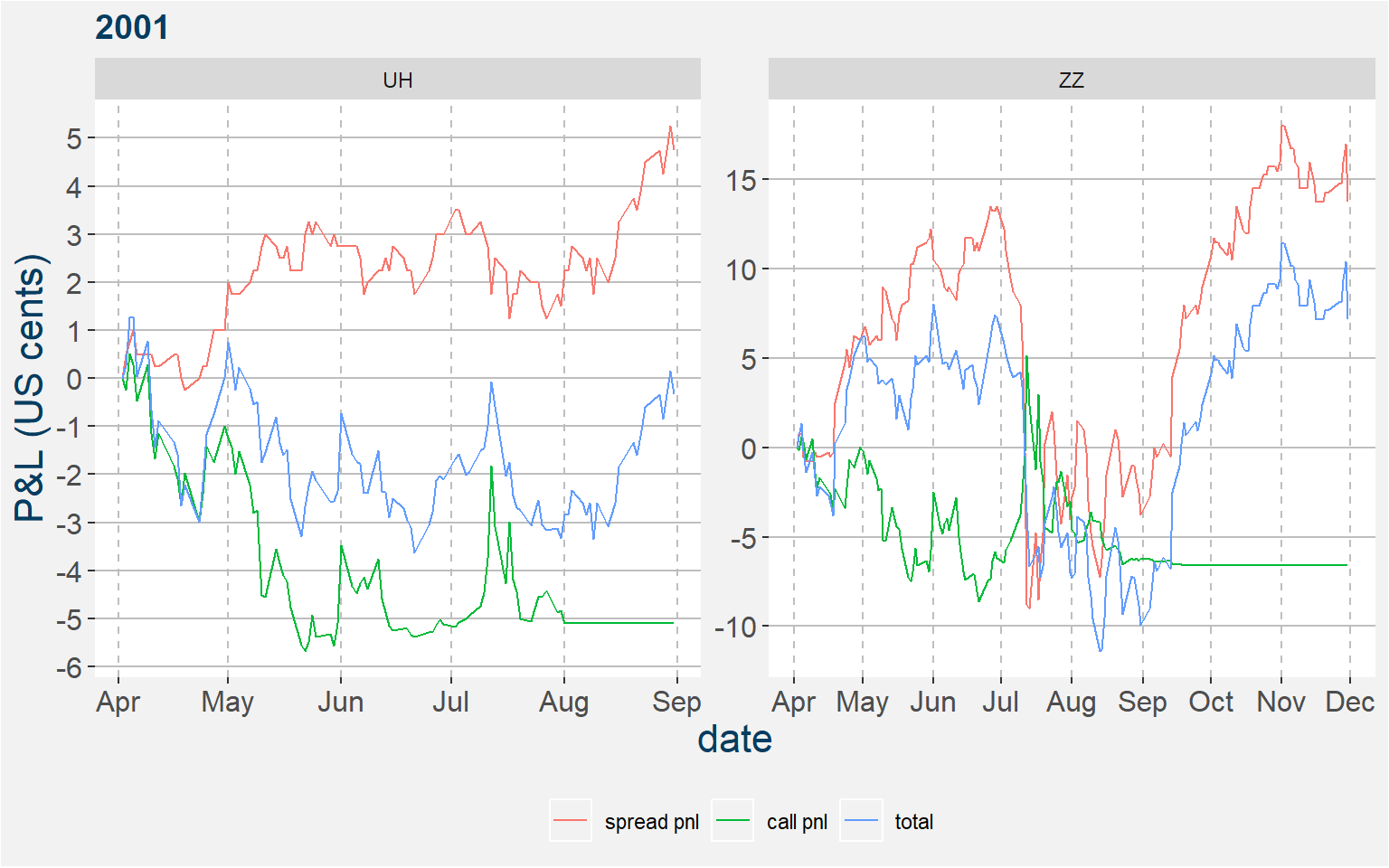

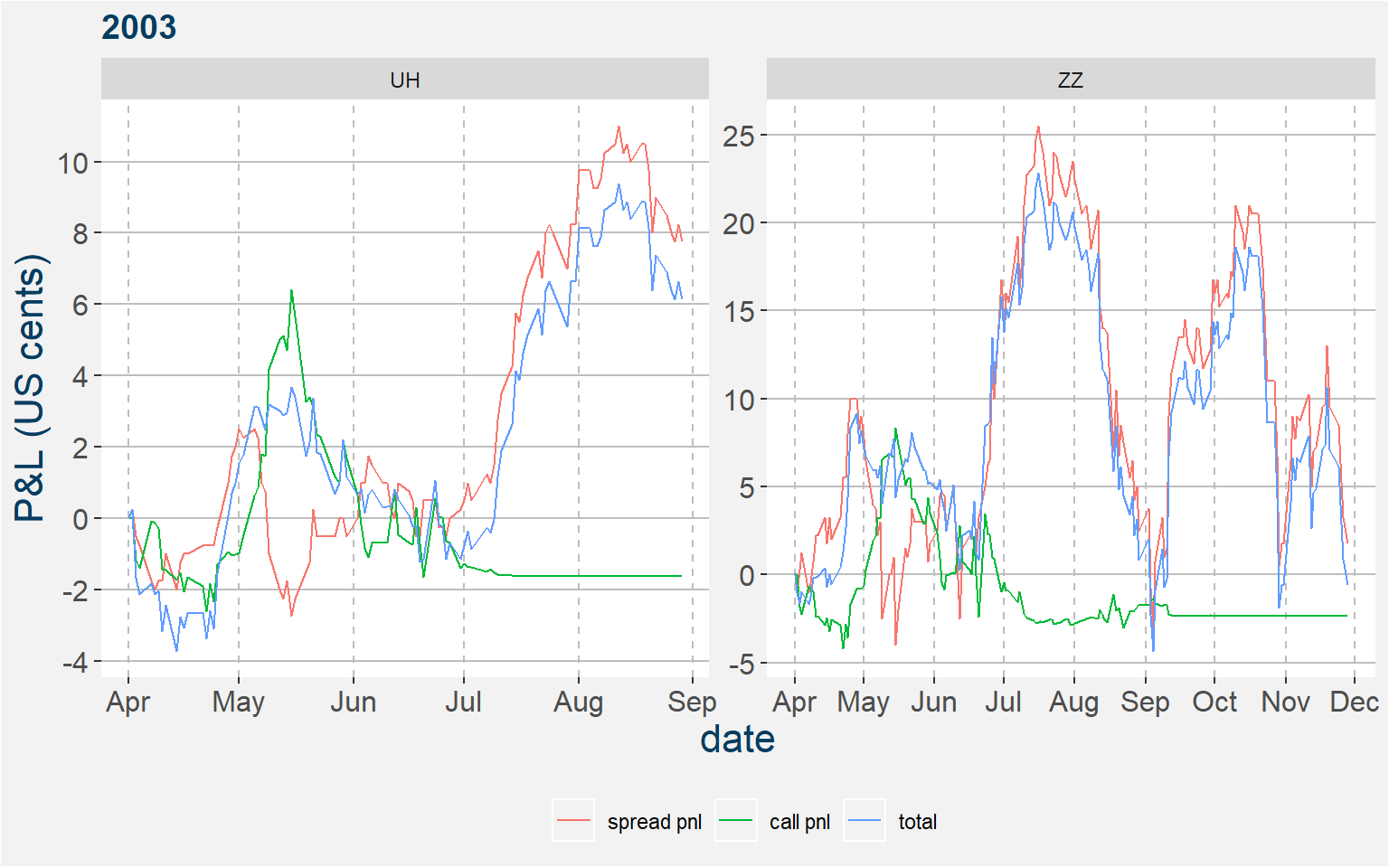
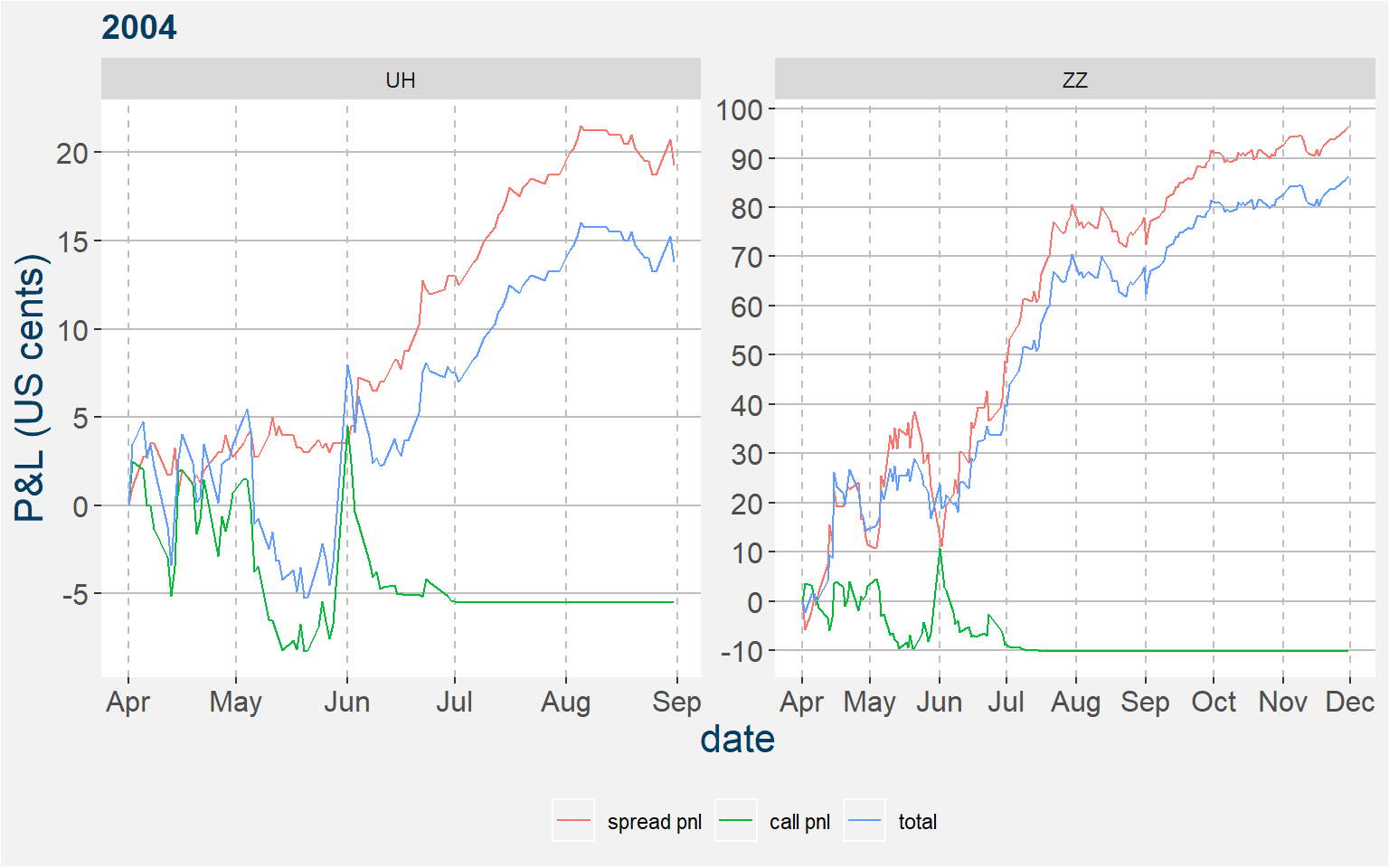
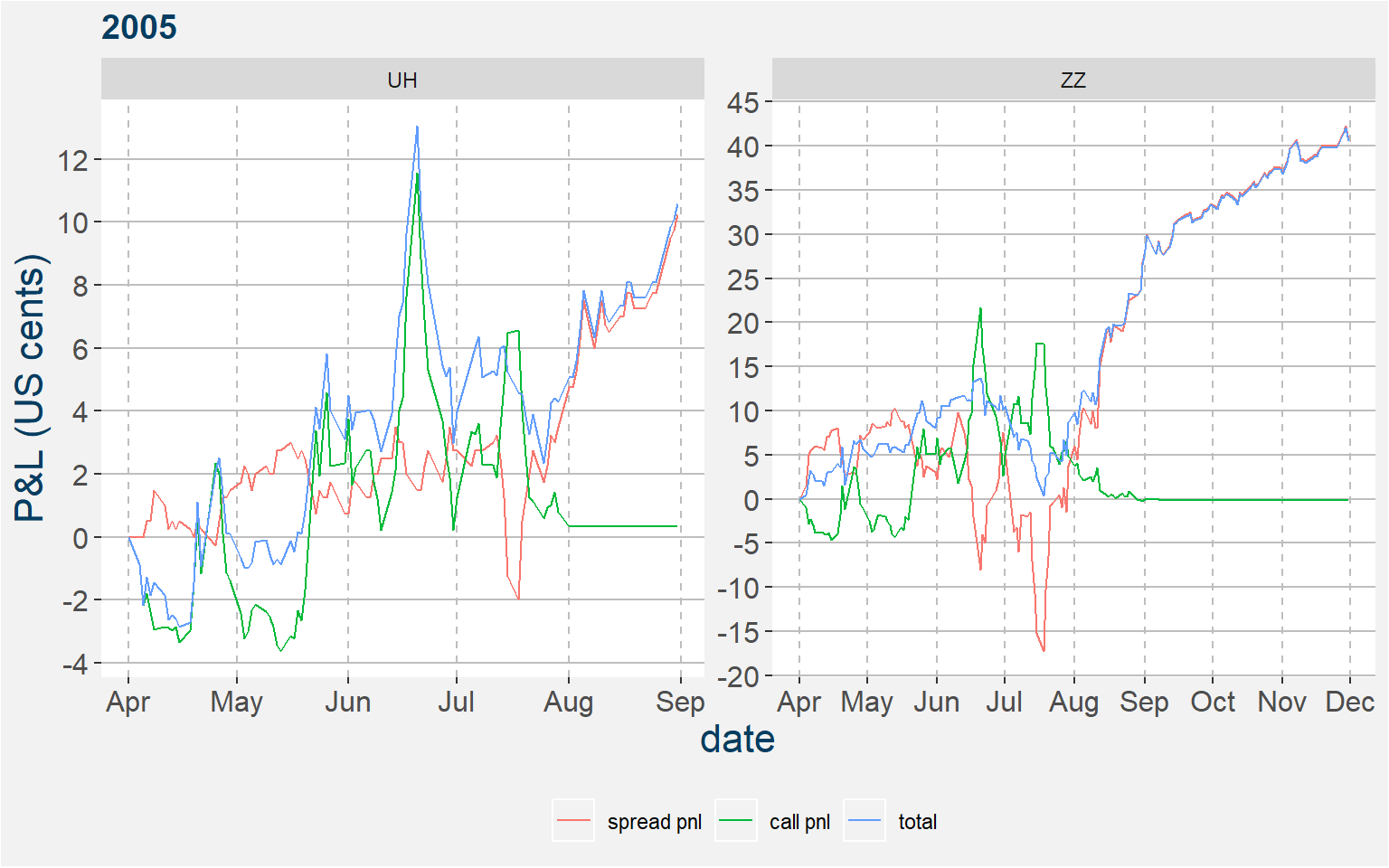



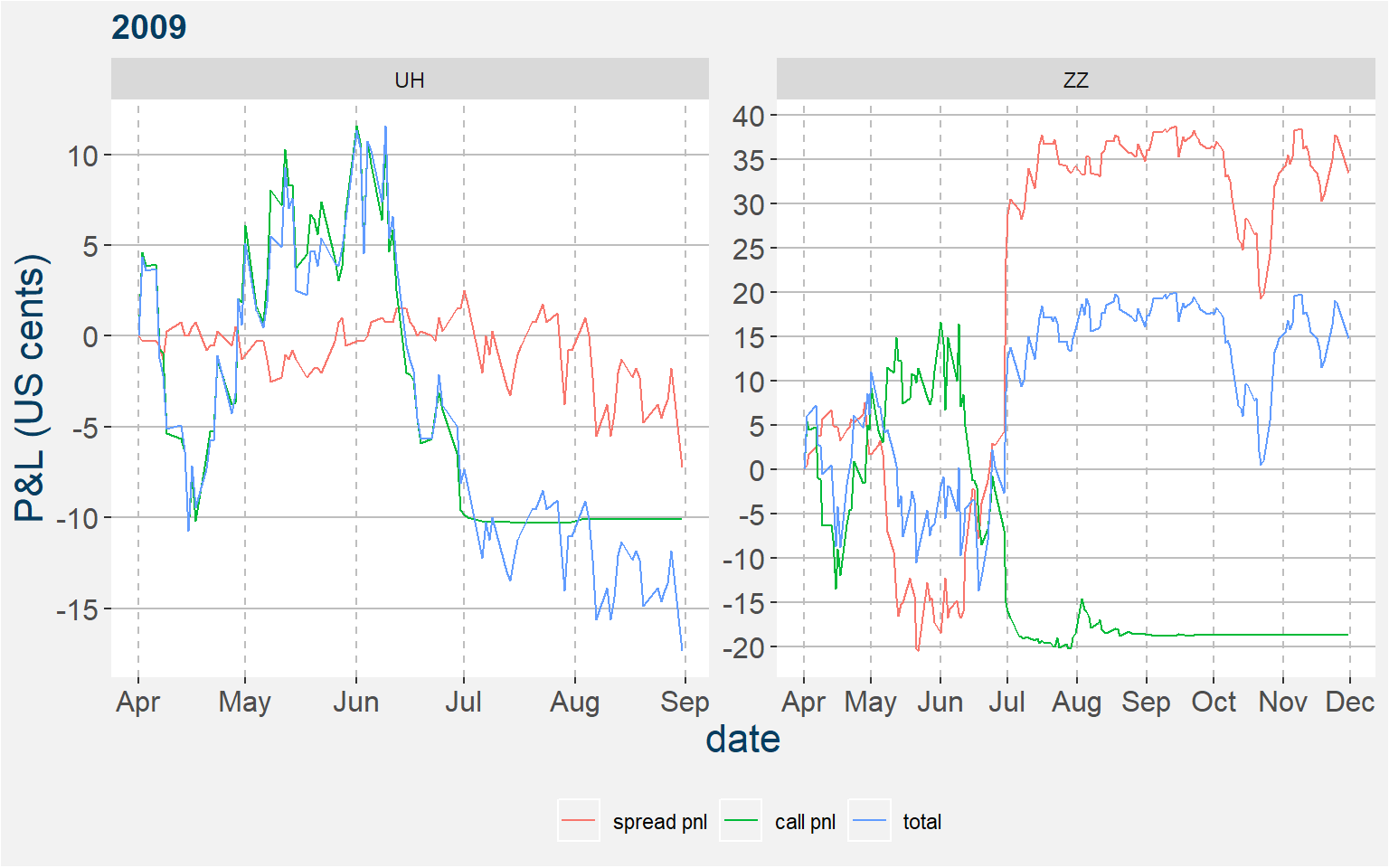



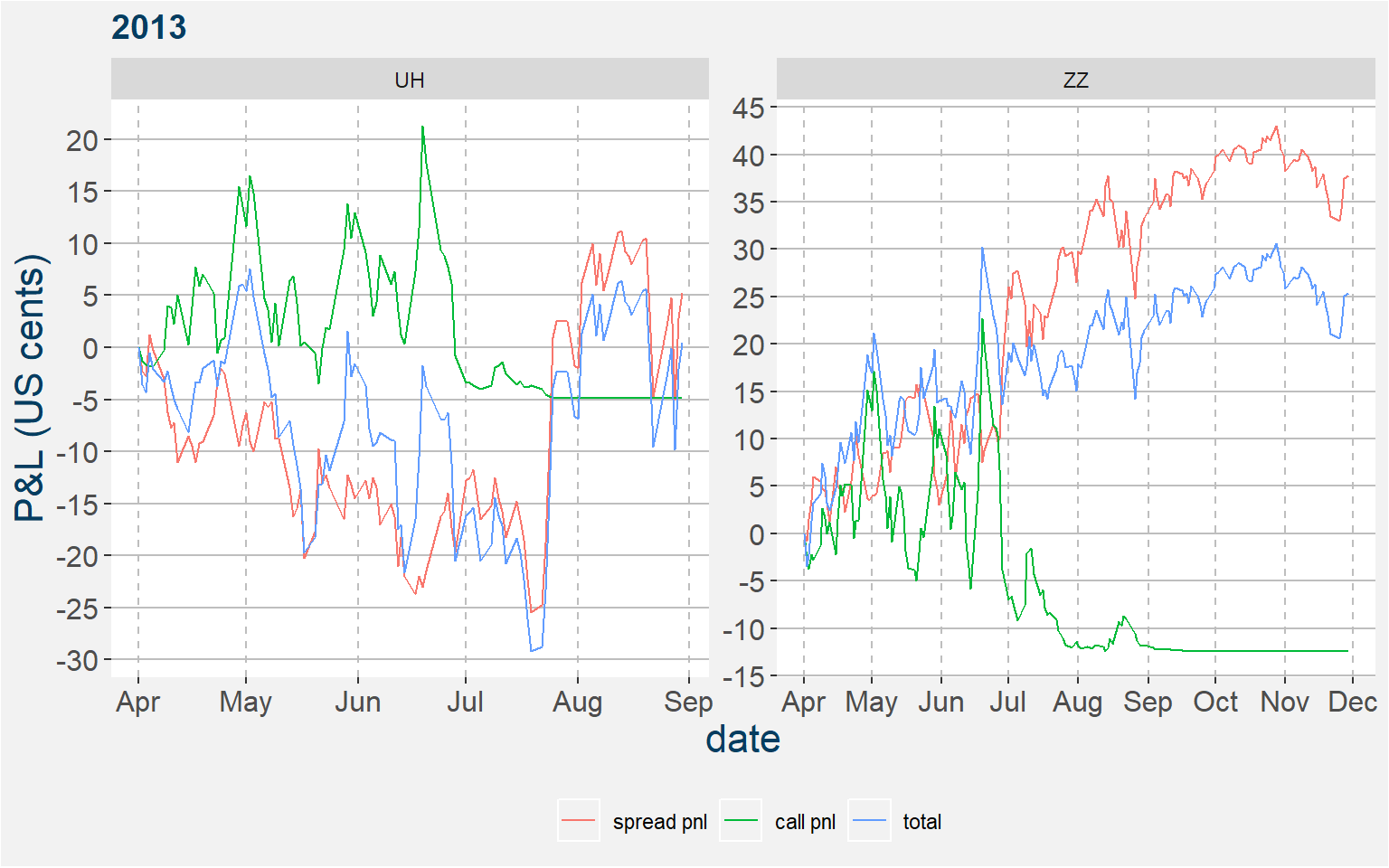
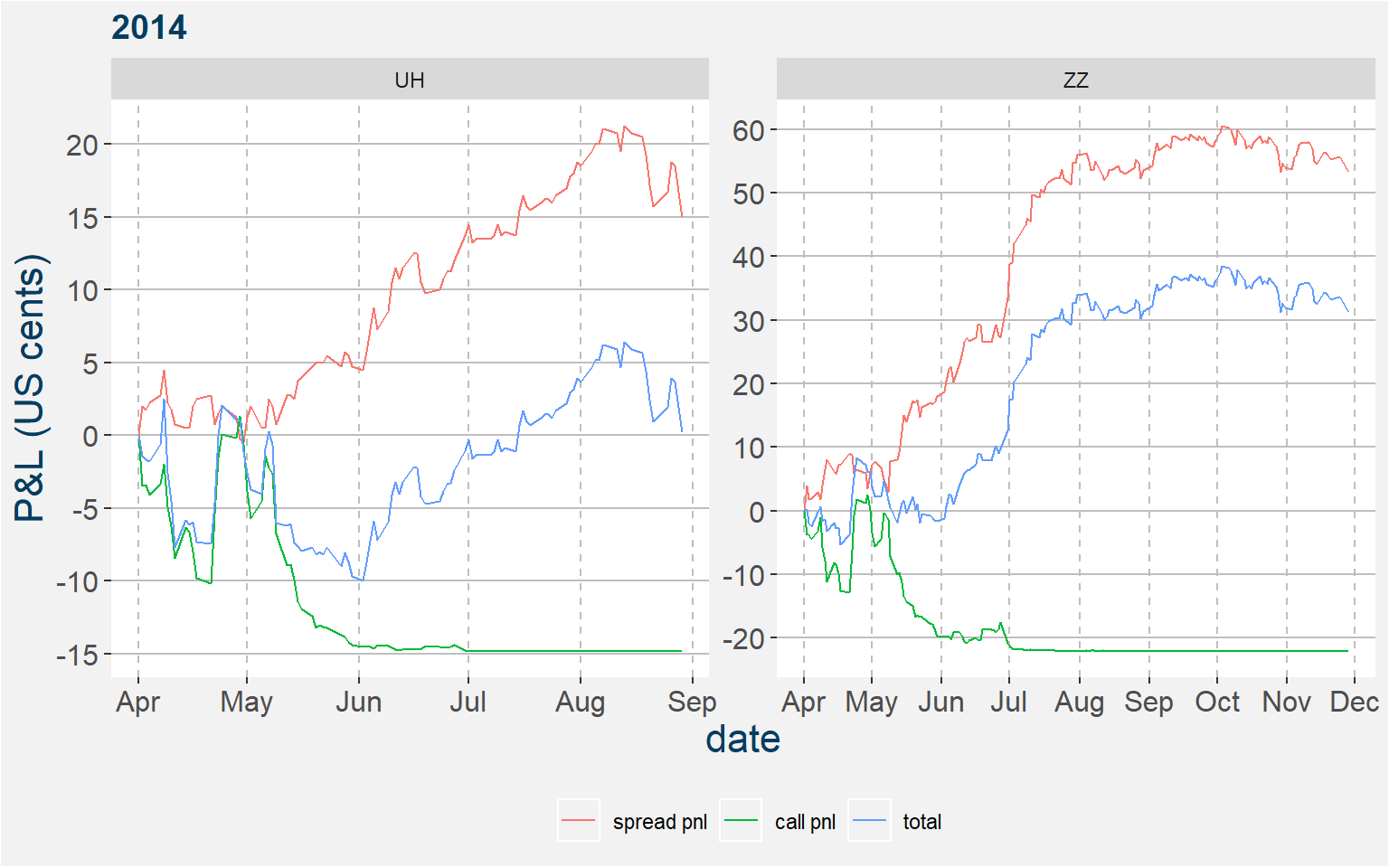
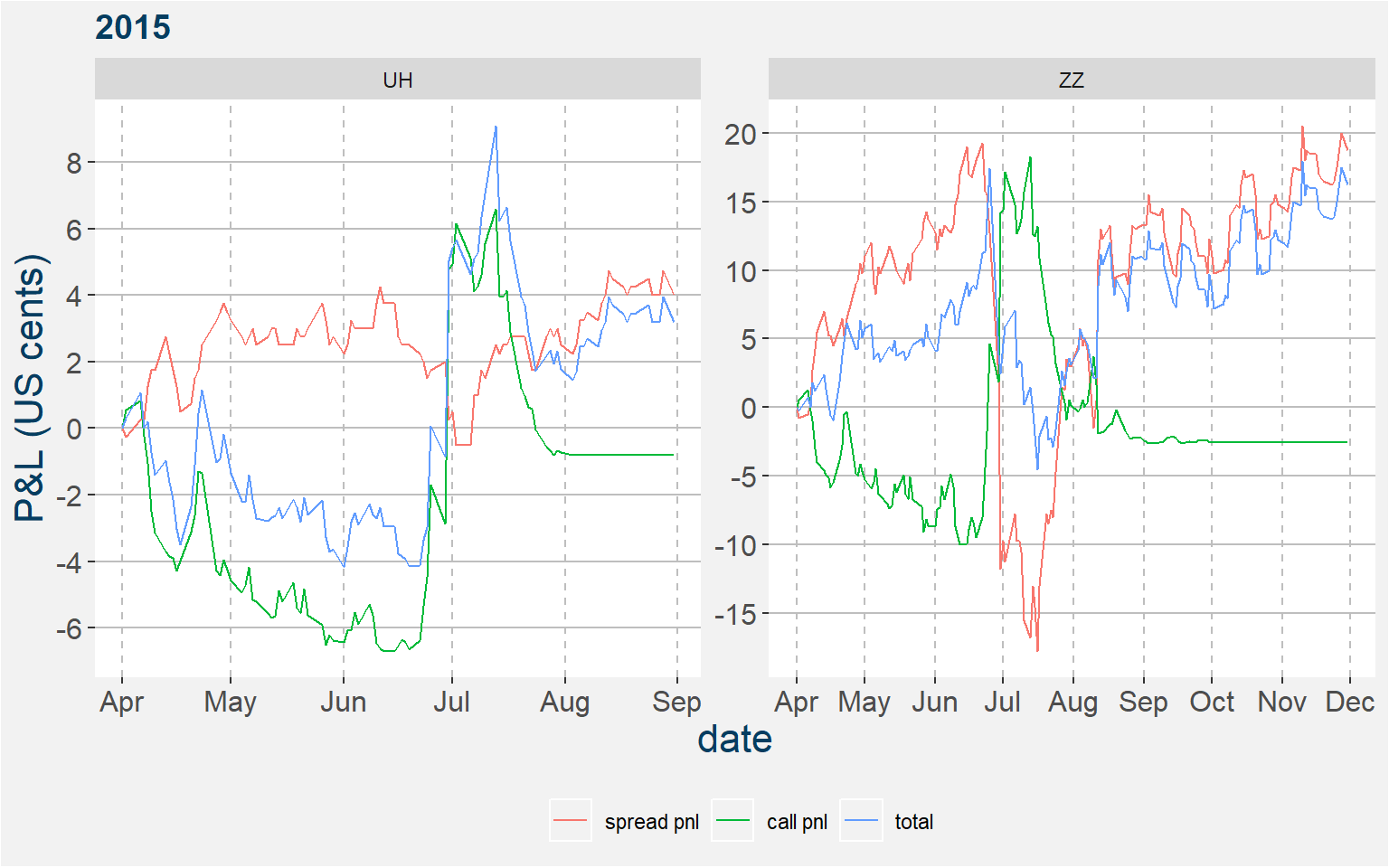



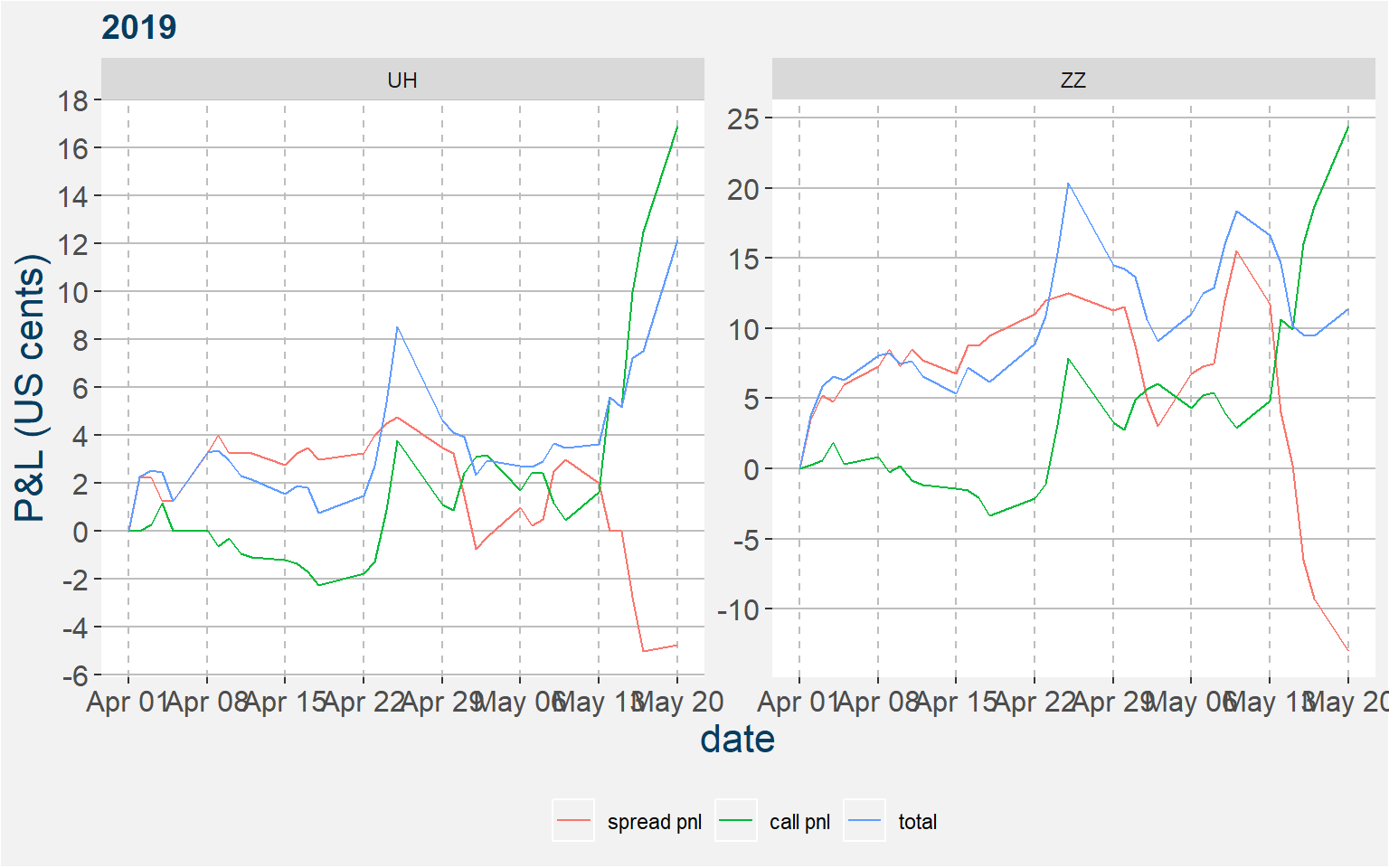
The two tables below aggregate the results of the plots above. Each columns shows the average profit and loss of the structure for each month.
| month | spread pnl | call pnl | total | calRef |
|---|---|---|---|---|
| 4 | 0.693484 | 0.7822127 | 1.475697 | UH |
| 5 | 2.394571 | 0.5365360 | 2.931107 | UH |
| 6 | 4.464770 | 2.5656837 | 7.030453 | UH |
| 7 | 8.240741 | 0.9456151 | 9.186356 | UH |
| 8 | 13.246032 | 0.7131347 | 13.959166 | UH |
| month | spread pnl | call pnl | total | calRef |
|---|---|---|---|---|
| 4 | 3.095745 | 1.398305 | 4.494050 | ZZ |
| 5 | 5.746843 | 2.856201 | 8.603044 | ZZ |
| 6 | 4.853658 | 6.752045 | 11.605703 | ZZ |
| 7 | 11.376984 | 5.508718 | 16.885702 | ZZ |
| 8 | 11.951720 | 5.206305 | 17.158025 | ZZ |
| 9 | 17.314266 | 3.217258 | 20.531524 | ZZ |
| 10 | 19.245000 | 2.395427 | 21.640427 | ZZ |
| 11 | 18.273707 | 2.610801 | 20.884508 | ZZ |
4 Spread vs Stock-to-Usage
For a little bit of added context we show the evolution of United States corn stock-to-usage. The plot below shows the monthly projected values of stock-to-usage data since 1995 up to the most recent. Current values are comparable to those since 2014, however the slow planting progress will most likely result in reduced acreage and yields which could decreae the stock-to-usage numbers significantly.

The plot below regresses the average spread between two consecuting WASDE reports as a function of United States stock-to-usage. The horizontal line with y-intercept at zero separates the backwardated and contago sections of the curve. Points in backwardation have been colour coded for ease of reference. Of special interest is data from 2011 and 2012 where large backwardations were observed for the ZZ spread. During 2012 even the UH spread was in backwardation.

If we conpare the results above, specifically for the 2012 data, we see that the call structure did indeed result in a good hedge during the weather stress period. the call structure capped losses for the ZZ spread at acceptable levels while the UH structure resulte din a positive performance.
5 Remarks
- We can use a call on the front month contract of a corn bear spread to hedge away some seasonal weather risk.
- The UH spread appears to be less likely to give a backwardation compared to the ZZ spread.
- There is not much benefit to owning the call after August